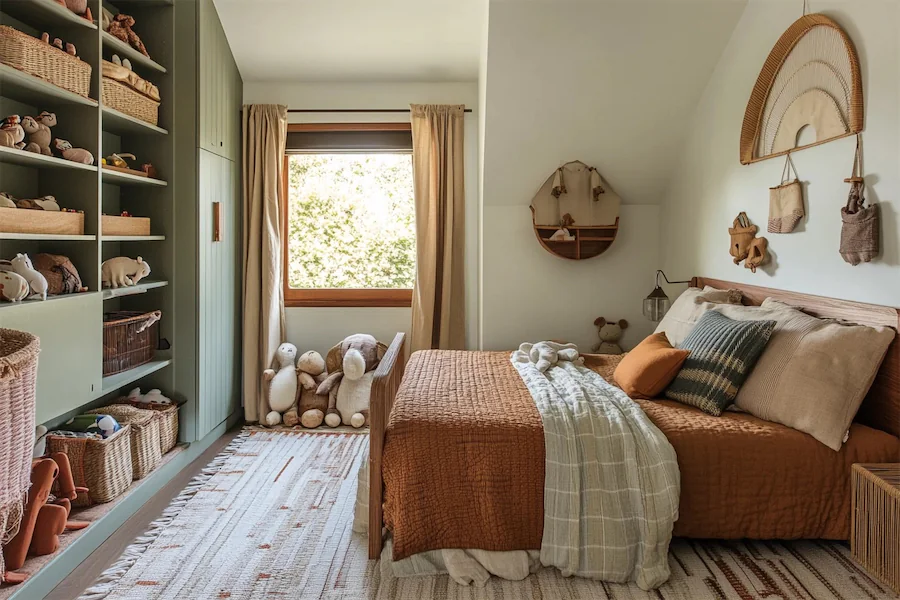Designing a child’s room with earthy tones creates a warm, calming, and inviting environment that fosters relaxation and creativity. Earth tones, inspired by natural elements, include shades like browns, beiges, greens, and muted yellows. These colors not only provide a neutral backdrop but also promote a sense of well-being and connection to nature.
Introduction to Earthy Tone Kid Rooms
Incorporating earthy tones into a child’s room involves using colors and materials that reflect the natural world. This design approach emphasizes harmony, tranquility, and a timeless aesthetic, making it suitable for various age groups and adaptable as the child grows.
History and Origins of Earthy Tone Interiors
The use of earthy tones in interior design dates back to ancient civilizations that utilized natural pigments derived from the earth, such as ochres and clays, to decorate their living spaces. These colors were not only readily available but also symbolized a connection to the environment. In modern times, the resurgence of earthy tones aligns with a growing desire to create serene and grounded living spaces that counterbalance the busyness of contemporary life.
Key Features of Earthy Tone Kid Rooms
- Color Palette: Utilize soft, muted shades like sage green, terracotta, sandy beige, and warm browns to establish a soothing atmosphere. These colors can be applied to walls, furniture, and accessories to create a cohesive look.
- Natural Materials: Incorporate materials such as wood, rattan, cotton, and linen to enhance the organic feel of the room. For example, a wooden bed frame paired with linen bedding adds texture and warmth.
- Textures and Patterns: Introduce various textures through woven rugs, knitted blankets, and patterned cushions to add depth and interest to the space. These elements contribute to a cozy and inviting environment.
Applications of Earthy Tones in Kid Rooms
- Walls: Painting walls in soft earth tones like sage green or warm beige sets a tranquil foundation. Alternatively, an accent wall with a nature-inspired mural can add visual interest.
- Furniture: Choose furniture pieces made from natural materials with finishes that showcase the wood’s grain. A rattan chair or a wooden dresser complements the earthy palette.
- Decor Accessories: Incorporate items like woven baskets for storage, nature-themed artwork, and plant-inspired motifs to reinforce the connection to the outdoors.
Considerations When Designing Earthy Tone Kid Rooms
- Adaptability: Select a color scheme and decor that can evolve with the child’s changing tastes and needs. Earthy tones provide a versatile backdrop that can accommodate different themes over time.
- Balance: While earthy tones are calming, it’s important to balance them with lighter shades or pops of color to prevent the room from feeling too subdued. Incorporating white or pastel accents can brighten the space.
- Durability: Opt for durable materials and finishes that can withstand the wear and tear of a child’s activities. For instance, washable paint and sturdy fabrics ensure longevity and ease of maintenance.
Conclusion
Designing a kid’s room with earthy tones fosters a nurturing and serene environment that supports rest and play. By thoughtfully selecting colors, materials, and textures inspired by nature, you can create a timeless space that grows with your child, providing comfort and inspiration throughout their developmental years.
